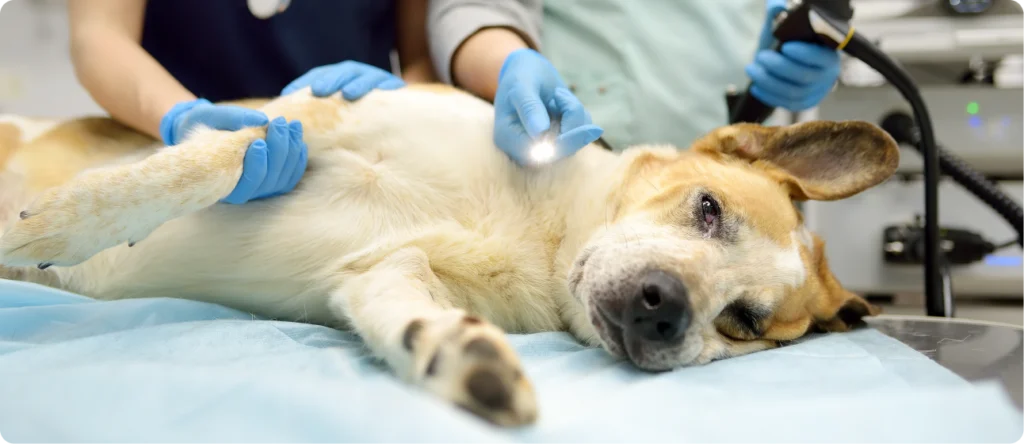Introduction: Revolutionizing Pet Health Care Through Technology
The world of pet health care has evolved dramatically in recent years, and one of the most impactful innovations is veterinary endoscopy. This minimally invasive procedure allows veterinarians to examine internal organs, diagnose conditions, and even perform certain treatments without the need for major surgery.
By using specialized equipment like those offered by Reescope, veterinarians can achieve accurate diagnostics, faster recovery times, and improved comfort for pets.
What Is Veterinary Endoscopy?
Veterinary endoscopy involves inserting a thin, flexible tube called an endoscope—equipped with a light and camera—into a pet’s body to visualize internal organs in real time. Unlike traditional surgical procedures, it requires only small incisions, minimizing trauma and reducing the risk of infection.
Common areas examined with endoscopy include:
- Gastrointestinal tract (stomach, esophagus, intestines)
- Respiratory tract (nasal passages, trachea, bronchi)
- Urinary system (bladder, urethra)
- Ears and joints for diagnostic purposes
Benefits of Veterinary Endoscopy in Pet Health Car
- Minimally Invasive Diagnosis
Endoscopy eliminates the need for exploratory surgery, meaning pets experience less pain, reduced recovery times, and fewer complications. - Enhanced Accuracy and Visualization
High-resolution imaging enables veterinarians to identify abnormalities such as tumors, foreign bodies, ulcers, and inflammation with remarkable clarity. - Faster Recovery
Because the procedure is less invasive, pets can often return home the same day, resuming normal activity within hours. - Reduced Stress for Pets and Owners
Shorter procedures, minimal scarring, and faster healing result in less anxiety for both animals and their caregivers.
Types of Veterinary Endoscopy Procedures
1. Gastrointestinal Endoscopy
Used to examine the stomach, esophagus, and intestines, this helps detect ulcers, obstructions, or swallowed foreign objects. It also allows for biopsy collection without open surgery.
2. Rhinoscopy and Bronchoscopy
Ideal for diagnosing nasal or respiratory issues, these techniques help locate blockages, tumors, or infections within the airways.
3. Laparoscopy
This type of endoscopy assists in viewing organs within the abdomen. It’s used for spaying, liver biopsies, and tumor evaluation, providing a faster and safer alternative to open surgery.
4. Cystoscopy and Arthroscopy
Cystoscopy allows examination of the bladder and urinary tract, while arthroscopy is used to diagnose joint problems such as ligament damage or arthritis.
Advanced Equipment Makes the Difference
High-quality endoscopic tools are crucial for effective results. Reescope, a trusted name in veterinary technology, provides reliable and innovative veterinary endoscopy equipment designed for accuracy and ease of use.
Their product line includes flexible and rigid endoscopes, video processors, and light sources that deliver crystal-clear imaging—ensuring veterinarians can make confident and informed decisions.
Real-Life Impact: Case Studies and Success Stories
A 2024 study published in the Journal of Veterinary Science found that pets who underwent endoscopic diagnosis experienced 40% shorter recovery times compared to those receiving traditional surgery.
Veterinarians also report higher diagnostic precision, enabling earlier detection of diseases like inflammatory bowel syndrome, nasal tumors, and bladder stones—leading to better long-term outcomes for pets.
How Pet Owners Benefit
As a pet owner, understanding how veterinary endoscopy supports your animal’s well-being helps you make informed decisions about their care. With fewer surgical risks, faster healing, and greater diagnostic accuracy, endoscopy ensures your furry companions receive the best possible treatment.
Whether your pet needs a diagnostic test or therapeutic procedure, consult your veterinarian about available endoscopic options and equipment quality—preferably from trusted brands like Reescope.
Conclusion: The Future of Pet Health Care Is Here
Veterinary endoscopy represents the future of compassionate, precise, and advanced pet health care. With its minimally invasive techniques and cutting-edge imaging technology, it ensures early diagnosis, less discomfort, and faster healing for animals.
Partnering with reliable equipment providers like Reescope empowers veterinarians to deliver world-class care—one procedure at a time.
Frequently Asked Questions (FAQs)
1. What is veterinary endoscopy and how does it work?
Veterinary endoscopy is a minimally invasive procedure that uses a small camera (endoscope) to view the inside of a pet’s organs. It allows veterinarians to diagnose and sometimes treat internal conditions without major surgery. This advanced technology improves accuracy and reduces recovery time for pets.
2. Why is endoscopy important in pet health care?
Endoscopy plays a vital role in pet health care by enabling early and precise diagnosis of issues affecting the digestive, respiratory, or urinary systems. It helps veterinarians detect problems such as tumors, ulcers, or foreign objects while minimizing stress and pain for pets.
3. Is veterinary endoscopy safe for pets?
Yes. Veterinary endoscopy is considered one of the safest diagnostic procedures available. Because it requires only tiny incisions or none at all, the risks of infection, bleeding, and prolonged recovery are significantly lower compared to traditional surgery.
4. How should I prepare my pet for an endoscopic procedure?
Before an endoscopy, your veterinarian may recommend fasting your pet for several hours to ensure clear visibility during the examination. The procedure is usually performed under anesthesia, so your vet will evaluate your pet’s overall health beforehand to ensure safety.
5. Where can veterinarians find reliable endoscopy equipment?
Veterinarians seeking high-quality, durable, and precise equipment can explore Reescope’s veterinary endoscopy products. Their range of flexible and rigid endoscopes, video systems, and light sources are designed to support exceptional diagnostic accuracy in modern pet health care.

